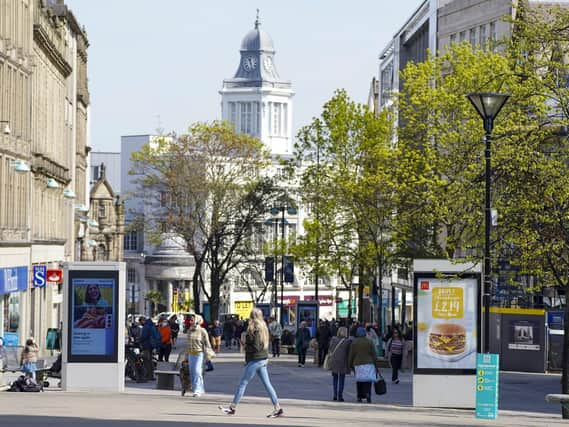'Sandwich economy' shops in Leeds and Sheffield 'face uncertain future without return of office workers'


Andrew Carter, chief executive of Centre for Cities, has made the warning after his organisation published new research showing footfall was still down by more than a third in the county’s two biggest cities, Leeds and Sheffield, last month compared to pre-pandemic levels.
In contrast, footfall in York was at 97 per cent of pre-Covid levels as residents and tourists flocked back to the city centre.
Advertisement
Hide AdAdvertisement
Hide AdThe research suggests that footfall in all of the UK’s largest cities and towns is now recovering as the UK emerges from pandemic restrictions. But the High Streets Recovery Tracker, which is published on a monthly basis and uses anonymised mobile phone data to make its assessments, showed a differing picture across Yorkshire.


Nationally, average footfall in the centre of the UK’s largest cities and towns reached 64 per cent of pre-Covid levels – up from 53 per cent at the end of July.
While Barnsley and Hull also had a good August, with footfall levels at 87 and 83 per cent respectively, the picture was less positive in Sheffield and Leeds. Sheffield’s footfall was just 57 per cent – below the national average and its three per cent increase on July footfall was the joint third worst performance in the country – behind only Mansfield and Portsmouth and level with Northampton and Slough.
Leeds was also below the national average with footfall at 60 per cent of pre-Covid levels, although it was 11 per cent up on its July figures.
Advertisement
Hide AdAdvertisement
Hide AdWhile Reading saw a 41 percentage point increase in footfall between the end of July and the end of August – attributed to Reading Festival – its sister event in Leeds had less of an impact on city centre footfall due to the Northern event being based out of town at Bramham Park.
Mr Carter said the mixed picture highlights the challenges of recovering from the pandemic for some areas.
“It is clear that many places across Yorkshire saw big jumps in high street footfall in August, which is good news for city centre businesses such as shops and restaurants.
“However, challenges still lie ahead as we enter autumn. Visitor numbers to Leeds and Sheffield – Yorkshire’s biggest cities – are still well below pre-pandemic and are unlikely to increase further without lots of people switching back from home working to offices. If office workers stay at home then many businesses in the so-called ‘sandwich economy’ will face an uncertain future.”
Advertisement
Hide AdAdvertisement
Hide AdA spokesperson for Centre for Cities said while worker numbers remain down across the country, some areas have benefited by an increase in evening and weekend leisure visitors.
“Footfall was highest in seaside resorts and other tourist destinations. It exceeded pre-Covid levels in Blackpool, Bournemouth and Southend and came close in Brighton, York and Edinburgh.
“The increase in footfall that places saw in August was driven by evening and weekend leisure visitors rather than workers. Worker footfall remained low throughout the summer. Overall footfall in central London and the centres of other large cities also remained low throughout the summer – both compared to other cities and compared to pre-pandemic.
“In central London overall footfall at the end of August was just 43 per cent of pre-pandemic levels. On the weekend it was higher, at 67 per cent, but still trailing smaller cities.”
Advertisement
Hide AdAdvertisement
Hide AdSupport The Yorkshire Post and become a subscriber today. Your subscription will help us to continue to bring quality news to the people of Yorkshire. In return, you'll see fewer ads on site, get free access to our app and receive exclusive members-only offers. Click here to subscribe.